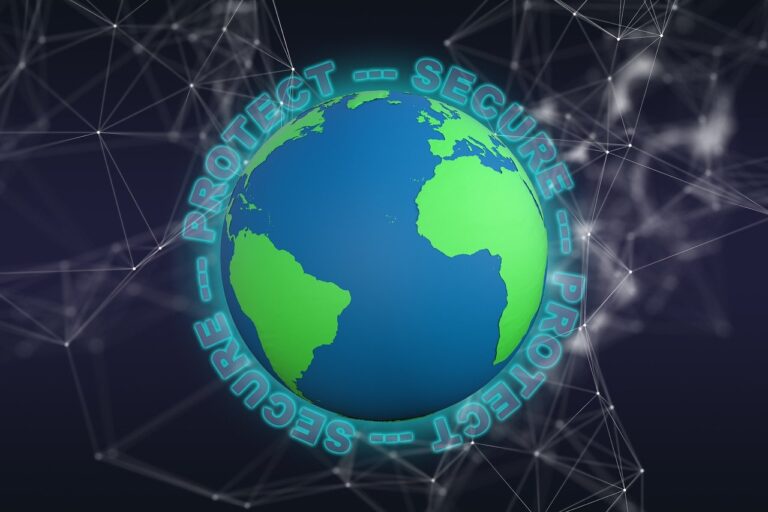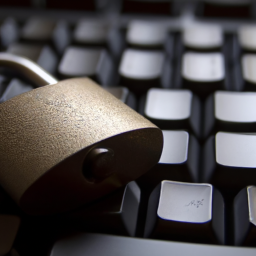What Guidelines Should Our Social Media Team Follow During A Cyber Incident?
In the fast-paced world of social media, it is crucial for every organization to have a well-prepared and proactive social media team. During a cyber incident, this team plays a vital role in safeguarding the company’s reputation and ensuring effective communication. In this article, we will explore essential guidelines that your social media team should follow to protect your brand during a cyber incident, helping them handle the situation with precision and professionalism.
Preparation
Establish a dedicated team
When facing a cyber incident, it is essential to establish a dedicated team within your organization that will be responsible for managing the incident response process. This team should consist of individuals with the necessary skills and expertise to effectively handle the situation. Assigning specific roles and responsibilities to each team member will ensure a coordinated and efficient response.
Define roles and responsibilities
To ensure a smooth and effective response to a cyber incident, it is crucial to define clear roles and responsibilities for each member of your incident response team. This will help avoid confusion and ensure efficient coordination among team members. Roles may include incident commander, communication lead, technical lead, legal representative, and others as needed based on the organization’s specific requirements.
Develop an incident response plan
Having a well-developed incident response plan is key to handling cyber incidents effectively. This plan should outline the step-by-step procedures to follow when responding to an incident. It should include guidelines on how to detect, contain, investigate, communicate, and remediate the incident. Regularly reviewing and updating the plan is necessary to ensure it remains relevant and aligned with the evolving threat landscape.
Establish communication channels
During a cyber incident, establishing effective communication channels is crucial for coordinating the response efforts. Ensure that all team members have access to reliable and secure communication tools, both within the organization and externally. Designating primary and secondary communication channels, such as email, phone lines, and collaboration platforms, will help ensure seamless communication even if one channel becomes compromised.
Identification
Monitor social media platforms
Monitoring social media platforms is an essential aspect of identifying a cyber incident, as these platforms are often an initial target for cybercriminals. The social media team should proactively monitor the organization’s official accounts for any suspicious activities, including unauthorized access attempts, unusual posts, or signs of hacking. Timely detection of such activities can help mitigate the impact of a cyber incident.
Recognize signs of a cyber incident
To effectively identify a cyber incident, it is crucial for the social media team to be aware of the common signs and indicators of a cyber attack. This includes unusual network activities, sudden system slowdowns, unauthorized access attempts, unexpected error messages, and unusual account behaviors. Regularly providing training and awareness programs to the social media team can help them stay vigilant and recognize these signs promptly.
Containment
Disable affected accounts or profiles
In the event of a cyber incident, it is important to disable any affected accounts or profiles as quickly as possible to prevent further damage or unauthorized access. The social media team should have a clear process in place to immediately disable compromised accounts and isolate them from the network. This step will help contain the incident and limit its impact on the organization’s social media presence.
Isolate compromised systems
Along with disabling affected accounts, isolating compromised systems is crucial to prevent the spread of the cyber incident. The social media team should work closely with the technical team to identify and isolate the systems that have been compromised. By disconnecting them from the network, the chances of further damage or unauthorized access can be significantly reduced.
Implement temporary security measures
To mitigate the impact of a cyber incident while containment measures are being implemented, it is important to implement temporary security measures. This may include enforcing strong passwords or two-factor authentication, limiting access to critical systems, and closely monitoring network traffic. These temporary measures will help minimize the risk of further compromise until a comprehensive remediation plan can be implemented.
Investigation
Gather information about the incident
To effectively respond to a cyber incident, it is crucial to gather as much information as possible about the incident. The social media team should work closely with the technical team to collect relevant data, such as logs, timestamps, and other forensic evidence. This information will assist in understanding the nature and scope of the incident, as well as identifying the potential impact and affected systems.
Determine the extent and impact
Once the necessary information has been gathered, it is important to determine the extent and impact of the cyber incident. This involves analyzing the data collected and assessing the potential damage done to the organization’s social media presence, reputation, and data. Understanding the scope of the incident will help the organization prioritize its response efforts and allocate resources effectively.
Identify the cause or source
Identifying the cause or source of the cyber incident is crucial to prevent future attacks and strengthen security measures. The social media team, in collaboration with the technical team, should conduct a thorough investigation to determine how the incident occurred. This may involve analyzing logs, network traffic, and other relevant data to identify any vulnerabilities or weaknesses that were exploited.
Communication
Acknowledge the incident
Once a cyber incident has been identified and contained, it is important to promptly acknowledge the incident. The social media team should work closely with the communication lead to craft and approve a clear and concise statement acknowledging the incident. This demonstrates transparency and assures stakeholders that the organization is taking the incident seriously.
Designate authorized spokespersons
To ensure clear and consistent communication during a cyber incident, it is important to designate authorized spokespersons. These individuals should be well-informed about the incident and its impact, and possess effective communication skills. The social media team should coordinate with the authorized spokespersons to ensure that all public communications align with the organization’s messaging strategy.
Craft clear and consistent messages
During a cyber incident, crafting clear and consistent messages is essential to avoid confusion and provide accurate information to stakeholders. The social media team should work closely with the communication lead and authorized spokespersons to develop messages that address the incident, explain the organization’s response strategy, and assure stakeholders that the necessary actions are being taken.
Provide regular updates
Keeping stakeholders informed throughout the incident response process is crucial in maintaining trust and confidence. The social media team should provide regular updates via official communication channels, such as social media accounts, website announcements, or direct communications to affected individuals. These updates should include the current status of the incident, progress made in containment and remediation efforts, and any other relevant information that stakeholders need to know.
Public Response
Monitor public sentiment
During a cyber incident, it is important to closely monitor public sentiment and reactions to the incident. The social media team should actively engage with stakeholders on social media platforms, monitoring for any questions, concerns, or negative sentiment. This allows the organization to quickly address any misunderstandings, provide clarifications, and address concerns in a timely manner.
Address concerns and questions
When stakeholders express concerns or ask questions about a cyber incident, it is crucial for the social media team to respond promptly and professionally. They should provide accurate information, address any misconceptions, and assure stakeholders that the organization is actively working to resolve the incident and protect their interests. Transparency and open communication will help maintain the organization’s reputation and build trust with stakeholders.
Apologize when necessary
In the event of a significant cyber incident, it may be necessary for the organization to issue an apology. The social media team should work closely with the communication lead to craft a sincere and empathetic apology message if the incident has caused harm or inconvenience to stakeholders. A genuine apology demonstrates accountability and a commitment to rectifying the situation.
Demonstrate commitment to security
To rebuild trust and assure stakeholders of the organization’s commitment to security, it is crucial to demonstrate a proactive approach. The social media team should collaborate with the technical team to implement additional security measures, such as enhanced monitoring, regular security assessments, and employee training programs. Communicating these efforts to stakeholders will help reassure them that the organization takes their security seriously.
Remediation
Remove malicious content
After a cyber incident, it is vital to remove any malicious content that may have been posted or distributed by the attackers. The social media team should review all social media accounts and platforms to identify and remove any unauthorized posts, comments, or links. This step ensures that stakeholders do not inadvertently interact with harmful content and helps protect the organization’s reputation.
Patch vulnerabilities or weak points
During the remediation phase, it is important to identify and patch vulnerabilities or weak points in the organization’s systems and networks. The social media team should collaborate with the technical team to address any identified vulnerabilities, apply necessary software patches, and update security configurations. This proactive approach will help prevent similar incidents in the future.
Implement additional security measures
To strengthen security posture and prevent future cyber incidents, it is crucial to implement additional security measures. The social media team should work closely with the technical team to identify and implement relevant measures, such as enhancing access controls, implementing advanced authentication methods, and deploying intrusion detection systems. Regularly reviewing and updating security measures will help stay ahead of potential threats.
Conduct a thorough system scan
Once the initial remediation efforts are complete, conducting a thorough system scan is crucial to ensure that all malicious activity and vulnerabilities have been addressed. The social media team should collaborate with the technical team to perform comprehensive scans of the organization’s systems and networks. This will help identify any remaining threats or weaknesses that may have been missed during the initial investigation.
Learning and Improvement
Perform a post-incident analysis
After a cyber incident has been successfully resolved, it is important to perform a post-incident analysis to gain insights and learn from the experience. The social media team should participate in this analysis, sharing their observations, challenges faced, and lessons learned. This analysis will help identify areas for improvement in the incident response process and inform future incident response planning.
Identify lessons learned
During the post-incident analysis, it is crucial to identify and document the lessons learned from the cyber incident. The social media team should collaborate with other stakeholders to identify any gaps or shortcomings in the response process. These lessons should be documented and shared with the incident response team and management to ensure that the necessary improvements are implemented.
Update incident response plan
Based on the lessons learned from the cyber incident, it is important to update the incident response plan accordingly. The social media team should work closely with the incident response team to incorporate any identified improvements into the plan. Regularly reviewing and updating the plan will help ensure that the organization is well-prepared to respond to future incidents effectively.
Provide training and awareness
To enhance the organization’s overall cyber resilience, it is important to provide ongoing training and awareness programs to all employees, including the social media team. These programs should cover topics such as identifying cyber threats, best practices for social media security, and incident response procedures. Continuous training and awareness will help build a strong security culture within the organization.
Legal and Compliance
Report the incident to appropriate authorities
In some cases, it may be necessary to report the cyber incident to appropriate authorities, such as law enforcement agencies or regulatory bodies. The social media team should work closely with the legal representative to ensure that the incident is reported promptly and accurately. Compliance with legal obligations helps ensure that the incident is properly investigated and any potential legal implications are addressed.
Comply with data breach notification laws
If the cyber incident involves a data breach that may impact individuals’ personal information, it is important to comply with data breach notification laws. The social media team should collaborate with the legal representative to determine the necessary steps and timelines for notifying affected individuals and relevant regulatory bodies. Complying with these laws demonstrates the organization’s commitment to protecting individuals’ privacy.
Consult legal counsel if necessary
Depending on the nature and severity of the cyber incident, it may be necessary to consult legal counsel to assess any potential legal implications. The social media team should collaborate with the legal representative to seek guidance on relevant legal matters, such as liability, contractual obligations, or reputational risks. Legal counsel can provide valuable advice and support during the incident response process.
Evaluation
Review incident response performance
After the incident has been fully resolved, it is important to conduct a thorough review of the incident response performance. The social media team should work with the incident response team to assess the overall effectiveness of the response efforts. This evaluation should identify strengths and weaknesses in the response process and help identify areas for improvement.
Assess effectiveness of actions taken
During the review process, it is important to assess the effectiveness of the specific actions taken during the incident response. The social media team should analyze their own actions and contributions, as well as those of other team members, to determine their impact on containing and mitigating the incident. This assessment will help identify any areas where actions could have been more effective or efficient.
Implement necessary improvements
Based on the findings from the incident response review and assessment, it is crucial to implement the necessary improvements to the organization’s incident response process. The social media team should work with the incident response team to address any identified gaps, update procedures, and incorporate lessons learned into future incident response planning. Continuous improvement is essential to effectively respond to future cyber incidents.
In conclusion, during a cyber incident, the social media team plays a vital role in identifying, containing, investigating, communicating, and remediating the incident. By following the outlined guidelines and working closely with other teams within the organization, the social media team can help mitigate the impact of an incident, maintain stakeholder trust, and improve the overall cyber resilience of the organization.








